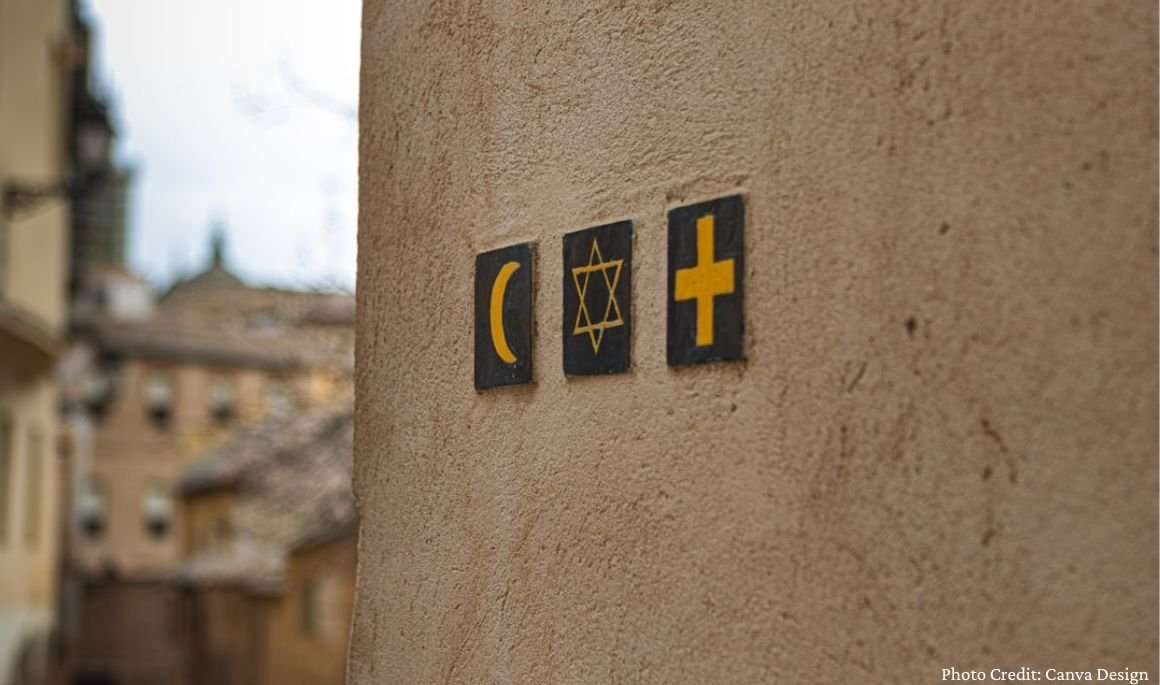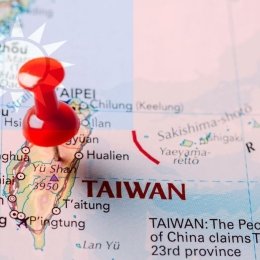- Norwich Blogs
- Blogs
- A Fragile Balance: Exploring the Tension Between Religious Freedom and Religious Liberty
A Fragile Balance: Exploring the Tension Between Religious Freedom and Religious Liberty
By John Pinna
This article explores the nuanced tension between religious freedom — the right to believe — and religious liberty — the right to act on those beliefs — highlighting how these concepts can conflict in pluralistic societies. It examines how governments, particularly in the U.S., have historically navigated and sometimes blurred these boundaries, especially when religious beliefs influence public policy or marginalize minority groups. Pinna advocates for clearer distinctions, stronger safeguards, and mutual respect to ensure that religious diversity is upheld without infringing on others’ rights.

Disclaimer: These opinion pieces represent the authors’ personal views, and do not necessarily reflect the official policies or positions of Norwich University or PAWC.
In the late afternoon sun, the steps of a centuries-old cathedral in rural France catch the last golden rays of light. A few blocks away, an Islamic center prepares for evening prayer. Down the road, a small storefront church serves free dinners to needy neighbors. Scenes like this — coexistence in tight quarters — dot the global map. But a closer look reveals deep fractures in how people interpret one of humanity’s oldest debates: Where does my freedom to believe (or not believe) end, and where does my freedom to practice begin?
For centuries, societies have wrestled with accommodating myriad faith traditions without tipping over into coercion. Today, that conversation remains as relevant — and heated — as ever. Scratch beneath the surface of a seemingly idyllic small town or a bustling metropolis that prides itself on tolerance, and you’ll often find a simmering tension between the words “freedom” and “liberty” — two concepts that, ironically, were meant to protect the diversity of faith and conscience.
The Roots of the Divide
Freedom to Believe (or Not)
When we talk about “religious freedom,” we typically mean the right to believe in whatever worldview resonates with us—or in none at all—without fear of punishment, loss of rights, or social ostracization. Historically, the First Amendment to the U.S. Constitution enshrined this principle by banning the establishment of a state religion and safeguarding the individual’s right to worship, convert, or remain secular. It was a radical proposition in an era when European kingdoms regularly enforced religious conformity under penalty of law.
These clauses in the U.S. Bill of Rights were born not from an abundance of tolerance but from necessity. In the 17th and 18th centuries, Protestant sects in colonial America clashed with each other with disheartening frequency. Being Puritan, Baptist, Quaker, or Anglican could be risky in the wrong colony; property was withheld from religious “outsiders,” and violence sometimes flared. Founders like Thomas Jefferson and James Madison realized that if the new nation was to survive, the government needed to remain neutral in matters of worship—or risk endless sectarian strife. This follows in the tradition of earlier leaders like Roger Williams who also supported separation of church and state to protect churches among the diversity of Christian traditions.
Liberty to Practice as One Sees Fit
Yet the term “religious liberty” brings another dimension entirely. If “freedom” is about the inalienable right to hold a belief, “liberty” is about the right to act on that belief.[1][2] On paper, that sounds fair, allowing an individual or a community to live out their faith authentically. In practice, however, it can open a Pandora’s box of ethical and legal dilemmas.
In one well-known scenario, a Christian baker refuses to make a cake for a same-sex wedding because such an act conflicts with his religious convictions. On the flip side, a religious minority — say, Muslims seeking space to pray in a public institution — may end up blocked by officials who claim that accommodating the prayer session intrudes upon their religious liberty to avoid or disapprove of that faith. Tensions flare, and soon, “religious liberty” can morph into a rhetorical cudgel wielded to justify exclusion, discrimination, or even a creeping theocracy.
A Double-Edged Sword
The Office of Faith in the Modern White House
In the United States, the interplay of faith and government is a perennial flashpoint. Multiple administrations, dating back to George W. Bush, have maintained an official White House liaison dedicated to “Faith-Based and Neighborhood Partnerships.” While its stated goal is to involve faith organizations in solving social problems, critics worry that such offices risk blurring church-state lines.
Recent shifts in rhetoric — especially among Christian nationalist voices — go further. Some declare that America is fundamentally a “Christian nation”, like representative Josh Hawley,[3] that merely tolerates other faiths. In fact, 45% of U.S. adults according to a 2022 Pew Poll agree that the United States should be a Christian nation.[4] Others celebrate that “Christian ethics and morality are back in the White House,”[5] implying a new era of religiously guided governance. Yet it’s important to note that every U.S. president has professed Christianity in some form or fashion. The claim that Christianity was ever “booted out” of government rings hollow.
What raises eyebrows is the sense that some believers, to uphold what they call “Christian liberty,” are willing to impose their practices in government spaces — such as overtly sectarian prayers at official events — disregarding the preferences (and rights) of non-Christian citizens. For one subset of evangelicals, it’s a natural extension of their belief in America’s “divine destiny.” For others — atheists, Muslims, Jews, Hindus, Sikhs, and Christians uncomfortable with the fusion of faith and policy — it’s cause for alarm.
Global Flashpoints
The tension isn’t uniquely American. Throughout history, empires and nation-states have used religion to sanctify various agendas. Missionary movements often crossed ethical lines between sharing faith and coercing entire populations — particularly in Native American and African nations colonized by European powers. Religious liberty, in such contexts, was rarely about free choice; it often accompanied political subjugation.
Similarly, the breakup of Yugoslavia in the 1990s featured “holy” rhetoric on all sides — Serbs (Orthodox Christians), Croats (Catholics), and Bosniaks (Muslims) each framed aspects of the conflict as the defense of their community’s “God-given” territory. In Northern Ireland, Protestants and Catholics spent decades locked in a complex conflict fueled partly by religious identity. And in some extremist contexts — like ISIS or certain cults — claims of “religious liberty” have been twisted into justification for forced conversions or violence against dissenters.
When Belief Turns into Policy
Sliding Toward Theocracy
So, when people of faith proclaim they should be “in charge” or that they’ve been “persecuted” and are now “restored” to power, alarm bells start to ring. Historically, government power plus religious zeal has a lousy track record. A group in charge of official state offices can define “morality” and shape law in ways that marginalize or criminalize others.
This marks a shift from the original constitutional framework meant to keep religious groups from becoming tyrannical. The First Amendment was meant to keep the peace among fractious Christian sects and, by extension, protect Jews, Muslims, Buddhists, atheists, and everyone else. For many religious minority communities, the current climate feels a bit like watching bigger fish thrash around in a small pond — everyone else must hope not to be swallowed in the process.
International Religious Freedom in Peril
The United States often presents itself as a beacon of religious freedom, codified in the First Amendment and legislation like the International Religious Freedom Act of 1998. Paradoxically, that very principle has been cited to defend campaigns overseas aligned with certain religious majorities while ignoring or dismissing cases where smaller, politically disfavored groups face a real risk of persecution.
This discrepancy isn’t lost on observers who watch American evangelicals cheer on Middle East allies as they target religious minorities — especially Muslims during holy periods, including violence at Al-Aqsa Mosque, without outcry from many corners of the so-called “religious liberty” movement. That silence can read like complicity in turning a blind eye to oppression or, at best, selective application of moral outrage.
To become more consistent on this point, U.S. political leaders should recommit to the following principles:
- Clarify Terms: Recognize that “freedom” to believe differs from “liberty” to enact. The former is nearly absolute, while the latter must operate within a social framework that respects everyone’s fundamental rights.
- Guardrails for Government: Transparency is essential when an administration establishes faith-based initiatives. Clear boundaries preserve genuine pluralism, ensuring no faith tradition controls public policy.
- Respect for Minorities: Whether it’s a gay couple seeking a wedding cake or a Muslim student requesting space to pray, respecting their religious (or non-religious) choices is not “persecution” of the majority. It’s the core of fair play in a diverse society.
- Historical Lessons: From the European Wars of Religion to modern conflicts in the Balkans or the Middle East, mixing political power with sectarian fervor has ignited too many tragedies. We’d do well to heed those cautionary tales.
- A Focus on Equal Treatment: If a policy or practice would outrage the majority if done by someone else, that’s a red flag. Religious liberty is not a one-way street.
Final Reflections
In the modern hustle, where a social-media post can spark firestorms of moralizing, and a single government statement can ripple across the globe, conversations about faith can be tinderboxes. But it’s precisely because beliefs run so deep that we must remain vigilant in separating the sacred realm of personal conviction from the policies that govern everyone.
Religious freedom — the right to believe or not to believe — is a core principle of modern democratic life. Religious liberty — the right to practice those beliefs — can be equally vital, so long as it doesn’t trample on the freedoms of others. The line between living one’s faith authentically and imposing it upon the unwilling has proven razor-thin throughout history, and failing to honor that boundary often leads us down the road to tyranny.
In an era when every faith group, from evangelical Christians in America to Muslim communities in Europe, feels vulnerable in some way, it’s more important than ever to keep those lines of communication (and cooperation) wide open. That’s the path to ensuring that the grand cathedrals, humble neighborhood churches, mosques on quiet streets, synagogues alive with centuries-old tradition, and the plainspoken atheist gatherings all coexist as more than just postcards or photos in a magazine — they stand as testaments to our collective ability to live and let live.
Because real religious freedom is bigger than any one creed. It’s the bold experiment of humanity learning to share one sky, one earth, and a multitude of paths in peace.
John Pinna Bio
John Thomas Pinna is an international development operative working in the areas of government relations, political positioning, and engagement modeling. He focuses on the developing world, religious freedom, and national security. He is the host of the first Muslim/Christian Podcast, Crossing Faiths, and the Founder and Executive Director of Muslims for Muslims International. Over his 20-year career in international development and countering radical ideology, Pinna has secured and managed $600 million across 43 projects, with engagement in 22 countries and secured a total of 12.7 billion dollars in development initiatives. In 2009, Pinna joined the American Islamic Congress (AIC) as its director of government and international relations. After AIC, he continued to develop multi-faith events as the executive director at the Development Organization for Societies in Transition (DOST), culminating in events with Muslim leaders and His Holiness the 14th Dalai Lama. Pinna also has drafted segments of the U.S. National Security Strategy (NSS) and supported the logistics of the first Ministerial at the U.S. Department of State (DOS). He advises the National Security Council Directorates on Iran, Pakistan, Afghanistan, Tunisia, and international religious freedom (IRF), as well as DOS bureaus on Afghanistan, Libya, Tunisia, and Ukraine, countering radical ideology and International religious freedom.
[1] “Establishment of the Religious Liberty Commission.” 2025. The White House. May 2025.
[2] “Freedom For Religion.” 2023. Yalelawjournal.org. 2023.
[3] Benen, Steve. 2024. “Why Republican Missouri Senator Josh Hawley’s Ahistorical ‘Christian Nation’ Nonsense Matters.” MSNBC.com. MSNBC. July 10, 2024.
[4] Nadeem, Reem. 2022. “45% of Americans Say U.S. Should Be a ‘Christian Nation.’” Pew Research Center. October 27, 2022.



